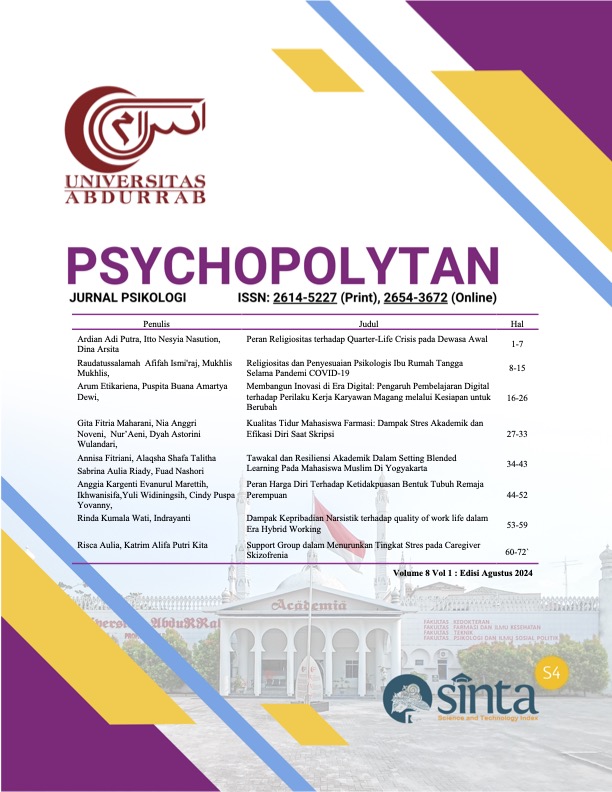Peran Religiositas terhadap Quarter-Life Crisis pada Dewasa Awal
DOI:
https://doi.org/10.36341/psi.v8i1.4888Keywords:
quarter life crisis, early adulthood, religiosityAbstract
The Quarter-life crisis is a crisis in early adulthood, where individuals fear the direction of life, such as careers, find out who they are, relationships, and social life. One of the factors that can affect a quarter-life crisis is religiosity. This study aims to see the relationship between religiosity and quarter-life crisis in early adulthood in Pekanbaru City. This research is correlational quantitative. Subjects in this study were 225 people (64 men and 161 women) in Pekanbaru with an age range of 18-37 years who were taken using purposive sampling technique with the characteristic of early adulthood who are Muslim. Data were collected using two scales, the religiosity scale, and the scale quarter-life crisis. The results in this study indicate a negative relationship between religiosity and quarter-life crisis in early adulthood in Pekanbaru with Sig. of 0.002 and the correlation coefficient of (r) = -0.201 means that high or low religiosity has a correlation with the quarter-life crisis, thus the research hypothesis is accepted.Based on the results of this research, appropriate interventions are needed to increase religiosity so that it can have a positive impact on the quarter-life crisis in early adulthood.
Downloads
Downloads
Published
Issue
Section
License
1. Copyright of all journal manuscripts is held by the Psychopolytan : Jurnal Psikologi
2. Formal legal provisions to access digital articles of electronic journal are subject to the provision of the Creative Commons Attribution-ShareAlike license (CC BY-NC-SA), which means that Psychopolytan : Jurnal Psikologi is rightful to keep, transfer media/format, manage in the form of databases, maintain, and publish articles.
3. Published manuscripts both printed and electronic are open access for educational, research, and library purposes. Additionally, the editorial board is not responsible for any violations of copyright law.
licensed under a Creative Commons Attribution-ShareAlike 4.0 International License.








